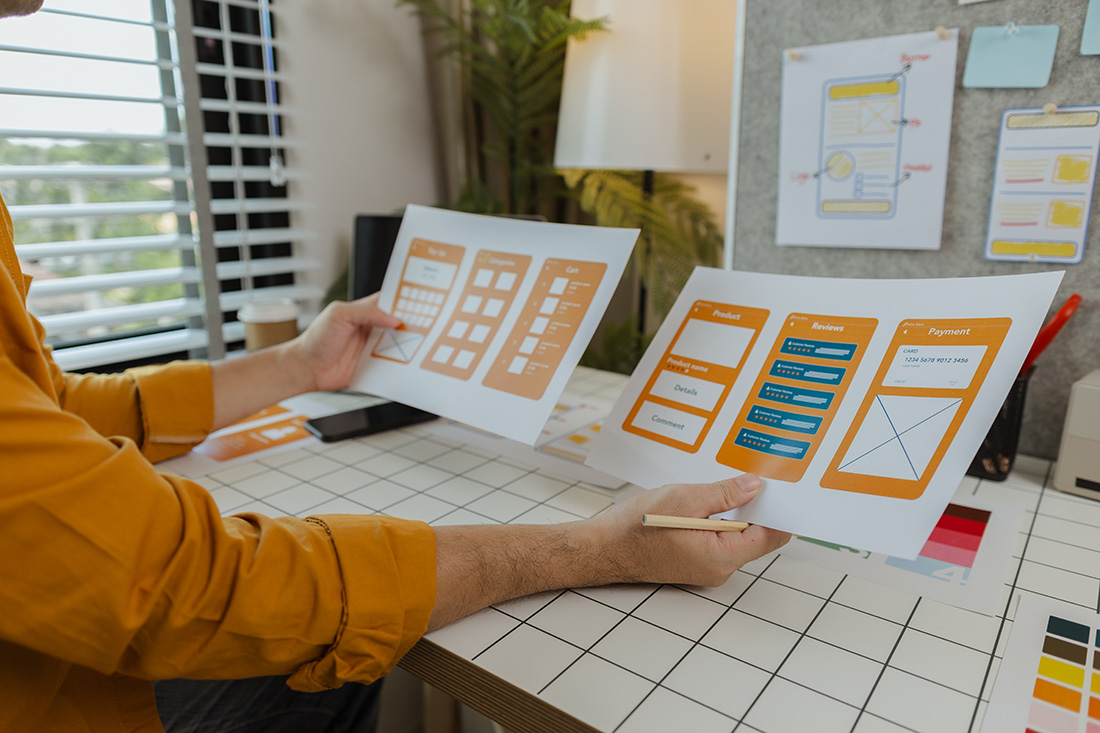Think of every app or website you’ve ever used. What made you stay or leave? Often, it comes down to how easy it was to navigate and interact with it. That’s the magic of user interface (UI) design. It’s not just about making software look good. It’s about how the product feels and how effortlessly it fits into our needs, acting as the essential link between humans and technology.
At its core, UI design is about much more than aesthetics. It’s about functionality, usability, and creating an intuitive flow that leads users where they need to go without confusion or frustration. Let’s dive into why UI design plays such a pivotal role in software development and the wide-reaching benefits it brings.
Creating a Great User Experience
When we use software, whether it’s an app on our phone or a web platform at work, we don’t want to think too hard about how it functions. We want it to work effortlessly, to guide us through it with ease. A thoughtfully designed UI is one that “just makes sense” to users. It enables people to get things done quickly and with minimal effort.
A good user interface is all about making things easier. What it does is it removes a lot of fluff and impediments and creates a seamless, entertaining experience. Users have more possibilities to continue using a product and suggest its usage to others if they realize their comfort level with it. It is as if you are using a piece of equipment that fits the work you are doing ideally – and you wish you had used it before.
Reducing Mistakes and Learning Time
We’ve seen cases where one is so confused when it comes to the usage of new software to an extent that they don’t know the way forward. It certainly does not look like they are, and I am stunned that what must be the most crucial buttons are so obscured, while the rest are too hard to find, and the ones I do find I cannot identify. A well designed UI addresses this directly – in learning time and ease of blunders.
UI designers study common user behaviors and create familiar, predictable patterns that guide people naturally. This means there will be fewer trial and error errors for the user and fewer mistakes. Whether it’s a banking app or a business dashboard, having a UI that’s easy to grasp not only reduces frustration but helps people get things done faster, with fewer headaches.
Boosting Productivity
Let’s face it: no one likes wasting time trying to figure out where things are. Whether we’re working or simply using an app for personal use, we want to get things done as efficiently as possible. A great UI design streamlines tasks.
Think of how much easier it is when you have clearly labeled buttons, simple navigation, and intuitive design elements. Fewer clicks, less searching. And for businesses, this directly translates into higher productivity. Employees spend less time fighting with software and more time focusing on their tasks. The result? Quicker project turnarounds and better overall performance.
Standing Out in a Crowded Market

In today’s hyper-competitive software world, having a product that works isn’t enough. There are thousands of alternatives out there, so what makes users pick your app over someone else’s? UI design plays a massive role here.
People are drawn to software that’s easy on the eyes and effortless to use. It’s not just about functionality but the overall feel. Take tech companies like Apple or Google, for example. Their success is tied to their emphasis on user experience. Their products aren’t just powerful; they’re designed to be simple and enjoyable to use. That’s what sets them apart.
Making Software Accessible for Everyone
Accessibility is always a great unsung hero in great UI design interfaces everywhere. It is not all about the ‘primary’ or ‘heuristic’ user, nor the basic user experience. It is about the execution of the product and the thought process behind guaranteeing the product to be accessible to everyone including the disabled.
Introducing scalable text, talk-to-me function, compatibility with screen readers, and moving focus between controls easily for keyboard-only users make everyone welcome. Not only does this help in making your product more inclusive, but it also expands the market for your software making the reach larger.
Building Trust and Loyalty
First impressions are everything. And with software, users form opinions in seconds. A poor or confusing interface can lead to a perception that the product is outdated or not user-friendly. On the flip side, a clean, functional, and visually appealing UI can build immediate trust.
When users feel comfortable and engaged, they’re more likely to come back and, better yet, stick around. They associate the positive experience they had with your brand, creating loyalty. Over time, this connection helps turn one-time users into repeat customers and advocates.
Seamless Experience Across Platforms
These days, we’re constantly switching between devices – from our smartphones to tablets, desktops, or even smart TVs. Users expect the same seamless experience, no matter the device they’re using.
A strong UI design ensures consistency across platforms. Whether someone is accessing your software from their phone or laptop, they should feel like they’re using the same product. To achieve this, it’s beneficial to work with local UI UX agencies that understand your audience and can create cohesive, user-centered designs.
In Conclusion: The Unsung Hero of Software Development
We know UI design is not one of the glamorous roles in software development, but its success is evident. It is what separates the utilitarian from the sophisticated and the rather mundane from the comfortably fun. From the perspective of using a system or service to give the end product longevity, sound UI is crucial. From making the user experience smooth and satisfying to setting a product apart in the marketplace, good UI is essential for long-term success. That is why many developers resort to professional UI/UX design services.
No matter if you are designing an app for a new start-up company or an application to cater to enterprise-level software, UI design will pay off in the future. This is what drives the user traffic, makes sure that they get the optimum value of the product, and enables a brand to foster long-term relationships with the consumers. Thus, while UI is an add-on to software, it takes that software to the next level, making it great.


